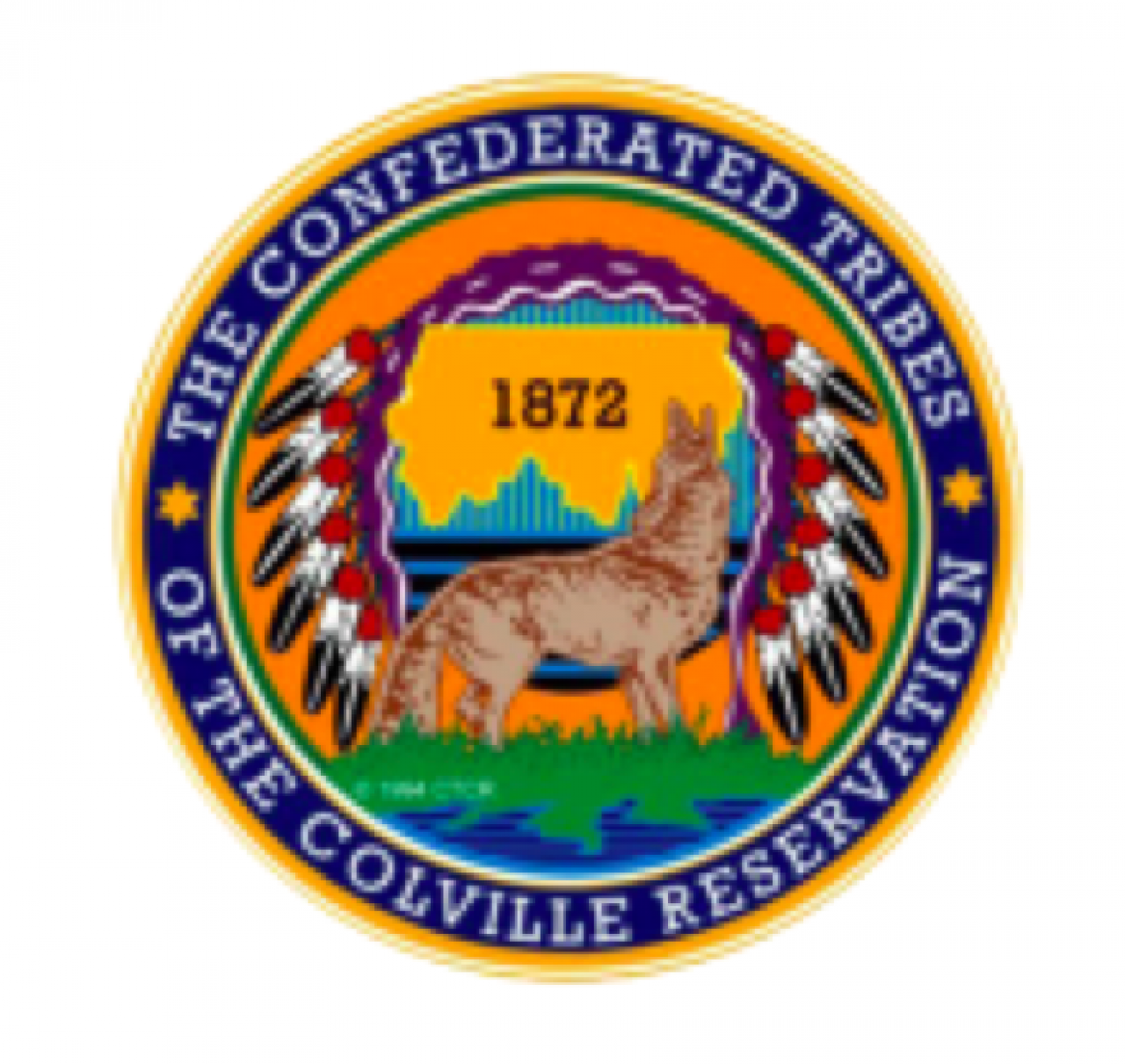The Living Lines of Identity: Navigating the Colville Confederated Tribes Reservation Map, Washington
The map of the Colville Confederated Tribes (CCT) Reservation in north-central Washington State is far more than a mere delineation of land; it is a profound testament to survival, resilience, and an enduring connection to ancestral territories. For the casual observer, it might appear as a complex patchwork of boundaries and land ownership. For those who understand its history and the vibrant identity of the 12 sovereign tribes it represents, it is a living document, echoing millennia of culture, displacement, and unwavering self-determination. This article delves into the intricate story woven into the very fabric of this map, offering a journey suitable for both the curious traveler and the avid student of history.
The Geographic Tapestry: An Overview of the Map
Stretching across 1.4 million acres of diverse landscapes, the Colville Reservation is an expansive territory nestled primarily between the Columbia River to the east and the Okanogan River to the west. Its northern boundary brushes against the Canadian border, while its southern reaches extend towards Grand Coulee Dam. Visually, the map reveals a rugged, breathtaking environment: towering mountains, rolling hills, vast forests, fertile river valleys, and shimmering lakes. The mighty Columbia River, particularly its impounded section known as Lake Roosevelt, forms a significant portion of the reservation’s eastern border, a constant, powerful presence that has shaped both the land and its peoples.
Key communities dot the map: Nespelem, the tribal capital, sits centrally, a hub of governance and cultural activity. Omak, a larger city just outside the western boundary but intrinsically linked to the reservation, serves as a major commercial center. Other smaller communities like Keller, Coulee Dam, and Inchelium are also visible. But beyond these named places, the map hints at a mosaic of private, state, and federal lands interspersed with tribal trust lands – a complex "checkerboard" ownership pattern that is a direct legacy of historical policies. This geographic layout is the stage upon which a powerful narrative of history and identity unfolds.
The Peoples of the Map: A Confederation of 12 Sovereign Nations
The "Colville Confederated Tribes" is not a single tribe, but rather a political and cultural alliance of twelve distinct, yet interconnected, Native American bands and tribes. Their unification was a direct response to the pressures of westward expansion and government policies, a strategic move to preserve their collective heritage. These twelve tribes are:
- Colville
- Nespelem
- San Poil
- Lakes (Sinixt)
- Palus
- Wenatchi
- Chelan
- Entiat
- Methow
- Okanogan (Syilx)
- Moses-Columbia (Sinkiuse-Columbia)
- Chief Joseph Band of Nez Perce (Wallowa Band)



Each of these groups historically occupied vast, separate territories across what is now Washington, Oregon, Idaho, and British Columbia. Their languages, while often related (many are Interior Salish dialects like Nselxcin and Nxa?amxcin), also include Sahaptin (Palus, Nez Perce). Their traditional lifeways, though sharing common threads of salmon fishing, root gathering, and hunting, were adapted to their specific environments. The map, therefore, symbolizes not just a single identity, but a vibrant tapestry woven from diverse cultural threads, united by shared experiences and a common future on the reservation.
Lines of History: From Unceded Territories to Reservation Boundaries
The current boundaries of the Colville Reservation are a stark visual representation of a tumultuous history, marked by immense loss and unwavering determination.
Before the Lines: For thousands of years prior to European contact, the ancestors of the Colville Confederated Tribes thrived across a vast, intricate network of traditional territories. Their lives were intimately connected to the land and its resources: the annual salmon runs on the Columbia River, the camas prairies, the abundant game in the forests and mountains. Trade routes crisscrossed the region, connecting these groups with distant tribes, fostering a rich cultural exchange. This was a landscape managed and understood with deep ecological wisdom, where boundaries were fluid and respected based on resource use, not rigid lines on a map.
The Arrival of a New World: The early 19th century brought fur traders, missionaries, and eventually, a wave of American settlers. The gold rush of the 1850s and 60s accelerated this encroachment, leading to increasing pressure on Native lands. Unlike many tribes in the Pacific Northwest, most of the bands that would form the CCT never signed formal treaties ceding their lands to the United States. This crucial detail means that their traditional territories, encompassing millions of acres, were never legally relinquished. These lands are, to this day, considered unceded territory.
The Creation and Shrinking of the Reservation: As settlers poured in, the need for a designated "Indian reservation" became a government priority to contain and control Native populations. In 1872, President Ulysses S. Grant established the Colville Reservation by Executive Order, initially encompassing a larger area east of the Columbia River. However, this initial reservation was short-lived. Just two months later, another Executive Order reversed it, establishing the reservation in its current location west of the Columbia River, forcing many bands to relocate yet again.
The reservation’s boundaries were not static. The Act of 1891 significantly reduced the reservation’s size, opening up the northern half to non-Native settlement. A further reduction occurred with the Act of 1906, opening up the southern half. These legislative acts effectively carved away vast portions of the original 1872 reservation, dramatically shrinking the land base and dispossessing the tribes of valuable resources and ancestral sites. The current map reflects these painful excisions.
The Allotment Era and the Checkerboard: The infamous Dawes Allotment Act of 1887 (General Allotment Act) further fractured tribal landholdings. The act aimed to assimilate Native Americans by breaking up communal land ownership into individual allotments. While some land was allotted to tribal members, much of the "surplus" land was then opened up to non-Native homesteaders. This policy led to the complex "checkerboard" ownership pattern visible on the map today, where tribal trust lands are interspersed with private, state, and federal holdings. This complicated ownership structure presents ongoing challenges for resource management, economic development, and asserting tribal sovereignty.
The Impact of Grand Coulee Dam: The construction of the Grand Coulee Dam in the 1930s was another monumental event that profoundly altered the landscape and the lives of the Colville people. While the dam brought electricity and irrigation, it came at an immense cost. The dam flooded traditional fishing sites, including Kettle Falls, a sacred gathering place and vital salmon fishery for millennia. It also submerged homes, villages, burial grounds, and fertile agricultural lands. The map shows Lake Roosevelt, the vast reservoir created by the dam, forming the eastern boundary of the reservation. This body of water, while offering recreational opportunities today, also serves as a poignant reminder of forced displacement and irreversible environmental change.
Resistance and Resilience: The 20th century also saw attempts at "termination," a federal policy aimed at dissolving tribal governments and assimilating Native Americans. The Colville Confederated Tribes, however, successfully resisted these efforts, solidifying their inherent right to self-governance. This period of resistance and the subsequent era of self-determination in the latter half of the 20th century mark a crucial shift towards tribal empowerment and the reclamation of control over their lands and destinies.
The Map as a Mirror of Identity: Sovereignty, Culture, and Future
Today, the Colville Reservation map embodies the enduring identity of the Confederated Tribes – an identity forged in adversity, sustained by tradition, and continually evolving.
Sovereignty and Self-Governance: The lines on the map delineate the jurisdictional boundaries of a sovereign nation. Within these lines, the Colville Business Council, the governing body, exercises inherent governmental powers. This includes managing natural resources (timber, water, fisheries, wildlife), operating essential services (healthcare, education, law enforcement), and pursuing economic development initiatives. The map is a visual declaration of self-determination and the right to govern their own affairs.
Cultural Preservation and Revitalization: Despite the historical traumas of land loss and forced assimilation, the CCT have actively worked to preserve and revitalize their rich cultural heritage. Language programs are crucial, aimed at teaching Nselxcin (Okanagan/Colville) and Nxa?amxcin (Moses-Columbia) to younger generations. Traditional arts, ceremonies, and storytelling continue to be practiced, connecting contemporary life with ancestral wisdom. The landscape itself, as depicted on the map, is replete with sacred sites, traditional use areas, and ancestral memories that are integral to their cultural identity.
Economic Development and Sustainability: The CCT are actively engaged in diversifying their economy. Timber management, agriculture, and tourism are significant sectors. The operation of casinos, such as the 12 Tribes Resort Casino near Omak, provides crucial revenue for tribal programs and services, demonstrating a modern approach to economic self-sufficiency. The map reflects these ventures, showing areas of managed forests, agricultural lands, and facilities that contribute to the well-being of the tribal community.
Land and Water Stewardship: The deep, ancestral connection to the land and water remains a cornerstone of Colville identity. The tribes are at the forefront of environmental stewardship, working to restore salmon runs, protect water quality in the Columbia River and its tributaries, and manage forests sustainably. This commitment is not just environmentalism in a modern sense, but a continuation of a worldview that understands humans as part of a larger, interconnected ecosystem, a responsibility passed down through generations.
Navigating with Respect: For Travelers and Learners
For those interested in exploring the Colville Reservation, whether for travel or educational purposes, understanding the map’s deeper meaning is paramount.
Respect Sovereignty: Remember that you are entering a sovereign nation. Respect tribal laws and regulations. Familiarize yourself with permissible activities and areas. Many areas are open for recreational activities like fishing, hiking, and camping, but it is always advisable to check with the Colville Confederated Tribes’ Natural Resources Department or the Tribal website for specific guidelines and permits.
Engage Respectfully: Seek opportunities to learn directly from tribal members at cultural centers or events. Support tribal businesses. If you encounter cultural ceremonies or private land, observe from a respectful distance or seek permission if appropriate. Understanding the historical context of the land and its people will enrich any visit.
Witness the Living History: The reservation offers powerful opportunities for education. Visit Chief Joseph’s gravesite near Nespelem, a poignant reminder of the Nez Perce’s epic struggle and the CCT’s compassionate welcome. Explore the cultural centers that showcase the diverse traditions of the 12 tribes. Observe the stunning natural beauty, recognizing that every landscape feature holds layers of historical and cultural significance. The annual Omak Stampede and World Famous Suicide Race, while controversial in its portrayal, is a major event that draws thousands and has deep historical ties to the region and its people.
The map of the Colville Confederated Tribes Reservation is not a static artifact of the past. It is a dynamic canvas upon which the story of 12 resilient nations continues to be written. It speaks of ancient traditions, profound losses, unwavering resistance, and a vibrant future. To truly understand this map is to embark on a journey through history, identity, and the enduring spirit of the Native peoples of Washington State. It challenges us to look beyond the lines and see the living cultures, the deep connection to land, and the powerful narrative of self-determination that thrives within its boundaries.



